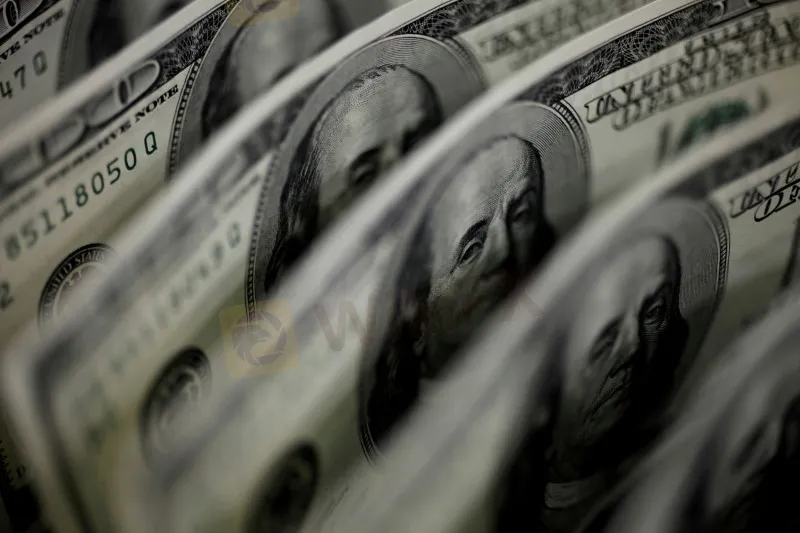简体中文
繁體中文
English
Pусский
日本語
ภาษาไทย
Tiếng Việt
Bahasa Indonesia
Español
हिन्दी
Filippiiniläinen
Français
Deutsch
Português
Türkçe
한국어
العربية
Dollar firms as U.S. inflation poses next test
Zusammenfassung:The dollar made a steady start to the week in Asia on Monday but stayed below Friday peaks, as currency traders seek a path between markets' volatile rate projections and central bankers vowing a wait-and-see approach despite surging inflation.

The dollar made a steady start to the week in Asia on Monday but stayed below Friday peaks, as currency traders seek a path between markets' volatile rate projections and central bankers vowing a wait-and-see approach despite surging inflation.
The next big test of faith in the Federal Reserve's insistence on patience looms on Wednesday, when U.S. inflation data is expected to show consumer growth running hot.
In the Asia session, the dollar was bid against the yen and clawed back some ground lost last week, rising 0.2% to 113.65 yen. The dollar also rose slightly on the euro to $1.1558, though remained below the 15-month top of $1.15135 made in the wake of strong U.S. labour data on Friday.
Sterling, which was walloped when the Bank of England (BoE) surprised traders by holding rates steady last week, hovered at $1.3478 after falling as far as $1.3425 on Friday, a five-week low.
The BoE's surprise triggered a sharp pullback in aggressive bets on imminent rate hikes in Britain and globally.
“Central banks have distorted a whole lot of markets, pumping up the equity market and pumping up the bond market,” said Jason Wong, a strategist at Bank of New Zealand in Wellington. “Currencies are sort of in the middle of all that, wondering what the hell's going on.”
The risk-sensitive Australian and New Zealand dollars struggled to make much headway in early trade, with the Aussie pinned just below $0.74 and the New Zealand dollar around $0.7126. [AUD/]
The U.S. dollar index rose 0.1% to 94.308.
Later on Monday no fewer than six Fed officials are speaking, with the most attention likely to be on Vice Chair Richard Clarida who is talking on Fed and ECB policy.
Goldman Sachs (NYSE:GS), which recently pulled forward its Fed hike expectations from the third quarter of 2023 to July 2022, believes the earlier hike could support the greenback.
“We have reduced the degree of dollar depreciation in our forecasts, especially vs the euro,” Goldman analysts said, though they expect the dollar to weaken in 2023 and beyond.
Elsewhere, data showed Chinese exports were unexpectedly strong and imports unexpectedly soft in another indicator of underwhelming demand, especially as China tightens movement restrictions to keep a lid on COVID-19.
The Communist Party begins a meeting on Monday which is expected to pass a resolution in praise of President Xi Jinping and lay the groundwork for a third term of his leadership.
Traders are also looking ahead to Chinese producer and consumer price data due on Wednesday, with annual producer price growth seen surging to 12% in perhaps a harbinger of further price pressure to come through global supply chains.
The yuan was steady at 6.3958 per dollar.
Source: Investing.com

Haftungsausschluss:
Die Ansichten in diesem Artikel stellen nur die persönlichen Ansichten des Autors dar und stellen keine Anlageberatung der Plattform dar. Diese Plattform übernimmt keine Garantie für die Richtigkeit, Vollständigkeit und Aktualität der Artikelinformationen und haftet auch nicht für Verluste, die durch die Nutzung oder das Vertrauen der Artikelinformationen verursacht werden.
WikiFX-Broker
Aktuelle Nachrichten
Bitcoin-Kurs könnte Mitte Januar seinen Höhepunkt erreichen, sagt ein Unternehmen
Immobilien: Das könnt ihr 2025 bei Kaufpreisen, Baufinanzierungen und Mieten erwarten, laut Experten
Flugtaxi-Startup Volocopter meldet Insolvenz an
Die besten Einstiegsgehälter 2025: Bei diesen Kanzleien können Anwälte im ersten Jahr am meisten verdienen
Ethereum Spot-ETFs erreichen einen wichtigen Meilenstein – während Bitcoin-ETFs weiter unter Abflüssen leiden
Krankenkassen-Verband: Beiträge für die gesetzliche Krankenkasse werden auch nach 2025 weiter steigen
PwC nutzt „Prompting-Partys, damit Mitarbeiter mit KI experimentieren können
Solana (SOL) legt um 6 % zu – starker Kapitalzufluss signalisiert weiteres Wachstumspotenzial
Chef von Bahn-Tochter über zweistellige Milliarden-Investitionen in die Schiene: „Erstmal wird es nicht schlechter
Höhere Beiträge ab 2025: So viel teurer wird eure Krankenkasse im kommenden Jahr
Wechselkursberechnung






